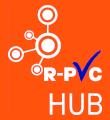Removal of legacy additives from the polymeric matrix
As you surely know, the problem of recycling post-consumer PVC (the one produced many years ago) is the presence in the formulation of additives permitted at that time but today, after the implementation of the Reach Regulation, considered dangerous and subject to authorization or restriction, the so-called “legacy additives”.
In recent times it has been thought of how to remove these substances from the polymeric matrix and, finally, today the industry has launched some research projects in this direction.
A project, called Remadyl, which aims to develop a method to remove lead and DEHP from post-consumer PVC waste, has been “launched” within the Horizon 2020 program.
With this project, officially started in June and lasting 4 years, we want to “rejuvenate” the “old PVC” by removing the dangerous substances that were allowed at the time when the article was produced and their replacement with new ones Reach compliant additives. The project involves the development of an innovative extraction technology based on a multi-step extrusion process.
Remadyl involves several partners including VinylPlus, Institutes, Universities, other associations, processors and recyclers of the PVC supply chain.
The project also includes the development of a method for automatically identifying and selecting waste containing these substances. The following LINK is available the press release on Remadyl of which we will of course keep you informed regarding its developments and the possibility of a future application of the new technology.
Another project, also funded by the EU through the “Orizon 2020” research program, was launched in June 2019 in order to allow the recycling of old PVC floors by eliminating the plasticizers to obtain a high quality recycled PVC. Nicknamed “Circular Flooring”, the project is aimed at a 500,000 ton PVC flooring market and a significant impact on the PVC flooring chain is expected.
In fact, old PVC floors may contain low-molecular-weight phthalate plasticizers (DEHP) that are no longer used in new products. These plasticizers cannot be extracted by existing mechanical processes. For this reason, the project coordinator, Fraunhofer Institute of Process Engineering together with Packaging IVV (Freising / Germany; www.ivv.fraunhofer.de) and CreaCycle (Grevenbroich / Germany; www.creacycle.de), have developed a process, called “CreaSolv”, which separates the plasticizer through an extractive purification. The pure PVC is then recovered and the solvents can be completely reused in the process.
CreaSolv has already passed the laboratory tests and with the project we want to evaluate the technical and commercial feasibility of this recycling process for PVC flooring coatings on an industrial scale. 11 companies and research institutes from Austria, Belgium, France, Germany and Greece participate in the CreaSolv project.
The press release is available at the following LINK.
